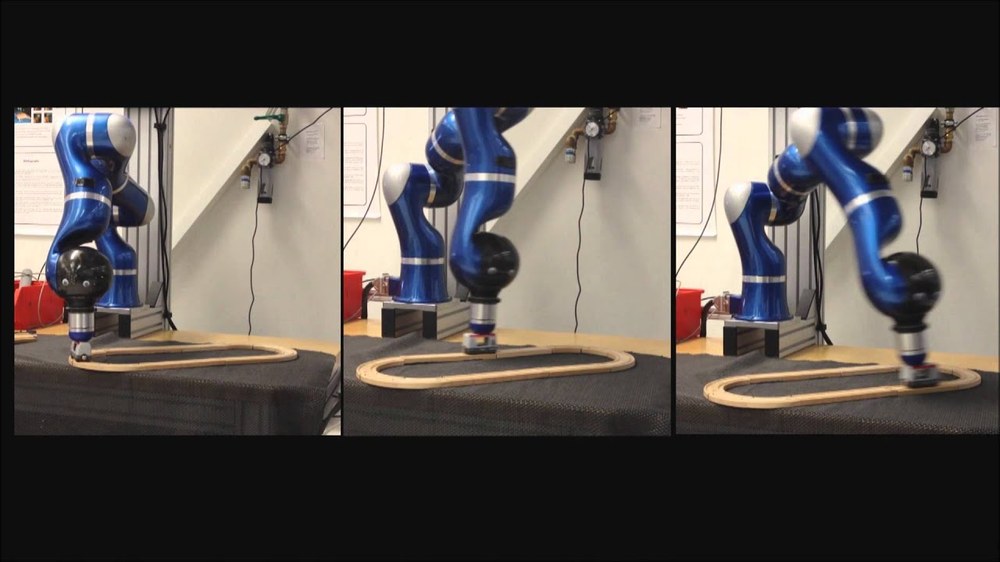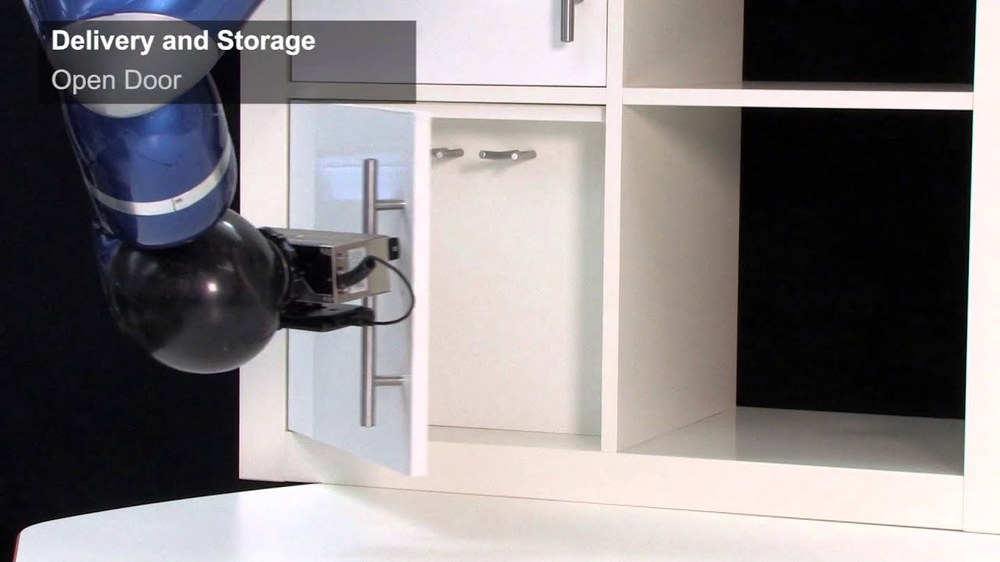Human-Centered Robotics

Bringing robots into our everyday professional and personal life for close coexistence, interaction, and collaboration needs holistic design, control, and planning concepts that place the human as their central design premise.
The field of Human-Centered Robotics aims at developing solutions to safe, intuitive, and dynamic robot action and interaction of man and machine.
We conduct research in the fields of
Safety in Human-Robot Interaction
- 2qReflex and interaction control
- Real-time motion planning
- Task and interaction learning
- Real-time task planning
- Intuitive and safe robot programming
- Human-Robot Interaction
- Learning and generalization of motion

Human-centered Robotics
Your consent to the storage of data ('cookies') is required for the playback of this video on Youtube.com. You can view and change your current data storage settings at any time under privacy.

Human-Robot Interaction Planning
Your consent to the storage of data ('cookies') is required for the playback of this video on Youtube.com. You can view and change your current data storage settings at any time under privacy.
The goal of the Human-Centered Robotics group is to enable robots that are developed in a human-centered design and control approach for direct physical interaction and cooperation with humans. For this, new generations of safe robots were developed at the Robotics and Mechatronics Center of DLR.

The KUKA Lightweight Robot (left), which was originally developed at DLR and then technology transferred to the robot manufacturer KUKA. The DLR Handarm System (right) is the newest generation of robots of DLR. It is equipped with Variable Stiffness Actuation in each joint.
These devices are sought to act as human assistants in industrial assembly and manufacturing, medicine, or, one day, even as a house-hold helpers in everyone’s home.
In such applications it has to be ensured that the robot will under no circumstances injure human due to malfunction or even in case of user errors. For this, a systematic approach for human injury analysis and prevention in robotics has to be developed.
Furthermore, the intuitive, dynamic, and flexible interaction with the human and its surrounding is to be accomplished by bridging the gap between control, motion planning, and task planning.
Based on such safer design and control, novel programming paradigms that allow for direct and intuitive interaction design are a major requirement for bringing such complex devices into everyday operation.
Our work is part of several internal DLR projects and various European project such as PHRIENDS, VIACTORS, and SAPHARI. Furthermore, we collaborate with several international partners such as Stanford University, Willow Garage, Johns Hopkins University, Korea University, and Technical University of Munich.




